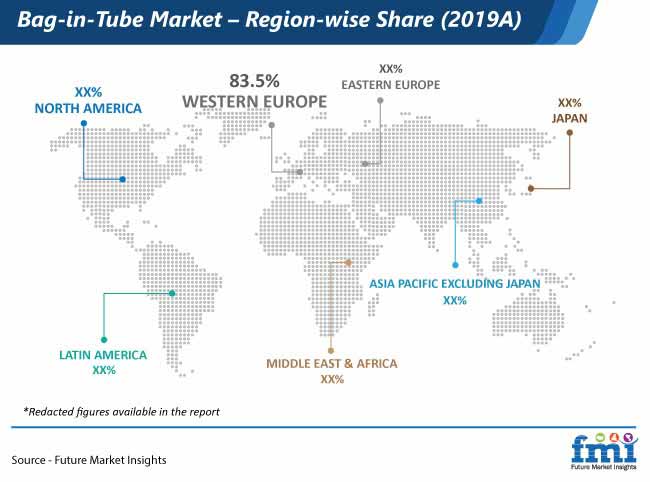Asthma and COPD Biomarkers Market Overview
Market Outlook
Chronic Obstructive Pulmonary Disease (COPD) are a group of progressive lung diseases which interfere with the airflow and make it difficult to breathe. The lung disease include non-reversible asthma, emphysema chronic bronchitis. The air flow is narrowed due to the damage of the lung tissues. Air pollution and smoking are the main risk factors of this disease. COPD is a common and incurable disease which is characterized by increased breathlessness, persistent respiratory symptoms and airflow limitations. The biomarkers are obtained in the form of bronchi alveolar fluids sputum, blood, urine and exhaled breath. These compounds are produced by the metabolic process in the body and are non-invasive metabolic markers. These biomarkers provide information to verify the disease, its stage, treatment and responses.
- To Get a Sample Copy of the Report visit @ https://www.futuremarketinsights.com/reports/brochure/rep-gb-6937
Factor driving the Asthma and COPD Biomarker market
Asthma and COPD biomarker market is primarily driven by the increasing smoking rate and growing pollution levels. According to WHO reports 64 million people had COPD and 3 million people died of COPD in 2004. Long-term exposure to chemical fumes, vapours and dusts are also some factors which are causing COPD and driving the market. Moreover the demand of breath analyzers is increasing in schools hospitals and other institutions to ensure the safety of the individuals.
The COPD biomarkers are non-invasive and are produced by the metabolic process in the body in the form of urine, sputum, and by exhaled breath etc. Increased levels of FeNO (Fractional exhaled nitric oxide) in exhaled breath is obtained by the hand held breath analyzers. These devices are easy to use and quick in diagnoses of the disease. Fibrinogen as a biomarker is measured in the plasma. Its increased levels provide the severity of COPD, airflow colonization and emphysema. The increased level of fibrinogen, white blood cells and C- reactive protein (CRP) combined together is accounted as a major risk for COPD. However, lack of awareness and diagnosis of chronic obstructive pulmonary diseases is hindering the growth of asthma and COPD biomarker market. Also if the disease is not detected at the earliest stage it could lead to respiratory infections, heart problems, lung cancer and high blood pressure. The overall market of asthma and COPD biomarker is pushed by the increasing demand of growing expenditure on healthcare. Asthma and COPD biomarker market offers the potential to identify disease in its earliest phase and the technology in the devices and the test kits holds a strong perception in future with its continued investment.
Request Complete TOC Of this Report @ https://www.futuremarketinsights.com/toc/rep-gb-6937
Regional Market Outlook
Geographically, asthma and COPD biomarker market is segmented into North America, Latin America, Europe, Asia-Pacific, and Middle East & Africa and Japan. The market in North America is expected to dominate the asthma and COPD biomarker market globally followed by Europe, North America is the dominant asthma and COPD biomarker market due incidences and prevalence of chronic pulmonary diseases in the region due to astringent and powerful regulations for the patient care and safety. The market in Asia Pacific region is expected to grow at a higher rate with the awareness programs and with the increasing chronic obstructive pulmonary diseases in the population. In addition, government initiatives on providing better healthcare facilities to the population contribute to the growth of the asthma and COPD biomarker market. With the availability of new technologies in regions such as Asia Pacific and Latin America is going to further spur revenue growth during the forecast period.
Primary research participants include demand-side respondents such as physicians, laboratory and diagnostic laboratory managers, procurement managers, research supervisors at academic and research institutes, as well as key opinion leaders in addition to supply-side respondents such as equipment and reagent manufacturers, custom solution and service providers who provide valuable insights on trends, research application of products and technologies, purchasing patterns, services offered and associated pricing.
Key data points covered in report
The report covers exhaustive analysis on:
- Asthma and COPD biomarker market by target areas, modality, end user and region
- Regional level market analysis of North America, Latin America, Europe, Asia Pacific, Middle East & Africa by method type, end user and country segments
- Asthma and COPD biomarker Market Dynamics & Opportunity Assessment
- Historical Actual Market Size, 2013 – 2017
- Asthma and COPD biomarker market Size & Forecast 2018-2028
- Asthma and COPD biomarker Current Trends/Issues/Challenges
- Competition & Companies involved
Market by application
- Chronic Bronchitis
- Emphysema
- Refractory Asthma
Market by Test Type
- Breath Analyzing
- Sputum tests
- Urine tests
- Plasma tests
Market by End user
- Hospitals
- Diagnostic Laboratories
- Asthma Clinics
Market by Region
- North America
- Latin America
- Europe
- Asia Pacific Excluding Japan
- Japan
- Middle East & Africa
Report Highlights:
- Shifting Industry dynamics
- In-depth market segmentation
- Historical, current and projected industry size Recent industry trends
- Key Competition landscape, market structure, regulatory scenario
- Epidemiology outlook for diseases
- Economical spending, regional healthcare outlook, consumer healthcare expenditure
- Availability of device, cost of the test, specificity and sensitivity
- Strategies for key players and product offerings, Channel strategies, regional foot print, channel footprint
- Potential and niche segments/regions exhibiting promising growth
- A neutral perspective towards market performance in terms of value and volume

